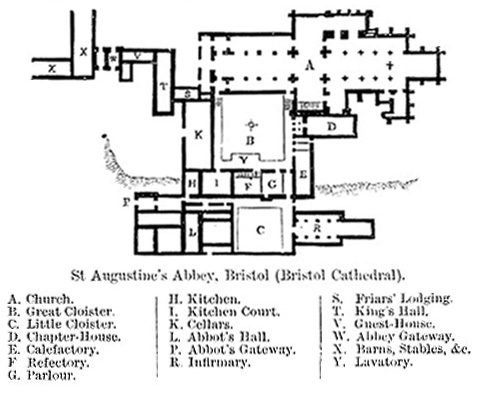(C) Cistercian Abbeys (cont.)
Buildings of Black Canons (or Austin Canons)
The buildings of the Austin Canons or Black Canons (so called from the colour of their habit) present few distinctive peculiarities. This order had its first seat in England at Colchester, where a house for Austin Canons was founded about A.D. 1105, and it very spread widely. As an order of regular clergy, holding a middle position between monks and secular canons, almost resembling a community of parish priests living under rule, they adopted naves of great length to accommodate large congregations. The choir is usually long, and is sometimes, as at Llanthony and Christ Church (Twynham), shut off from the aisles, or, as at Bolton, Kirkham, &c., is destitute of aisles altogether. The nave in the northern houses, not unfrequently, had only a north aisle, as at Bolton, Brinkburn, and Lanercost. The arrangement of the monastic buildings followed the ordinary type. The prior's lodge was almost invariably attached to the S.W. angle of the nave.
St. Augustine's Abbey, Bristol
The annexed plan of the Abbey of St Augustine's at Bristol, now the cathedral church of that city, shows the arrangement of the buildings, which departs very little from the ordinary Benedictine type.
The Austin Canons' house at Thornton, in Lincolnshire, is remarkable for the size and magnificence of its gate-house, the upper floors of which formed the guest-house of the establishment, and for possessing an octagonal chapter-house of Decorated date.
Read the rest of this article:
Abbey - Table of Contents
